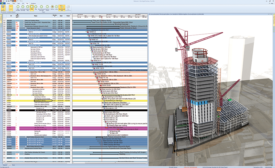Home » construction technology
Articles Tagged with ''construction technology''
Mentoring to Stop the Brain Drain
Bridging the Gap: Fostering Trans-generational Working Relationships
Coping with Loss of Institutional Intelligence as the Baby Boomer Generation Retires
Read More
Seeing Is Believing: The Growth of 4D Construction Scheduling
Interest heats up for risk-reducing tools that marry highly detailed schedules to design and construction models
Read More
How Video Games Became Design and Construction Tools
A new generation is hacking into its childhood toys—and driving better project decisions
Read More
Construction Technology
Bring Back the Two-Way Radio
The president of a family-owned 73-year-old construction firm wants to use two-way radios on jobsites again.
Read More
The latest news and information
#1 Source for Construction News, Data, Rankings, Analysis, and Commentary
JOIN ENR UNLIMITEDCopyright ©2024. All Rights Reserved BNP Media.
Design, CMS, Hosting & Web Development :: ePublishing








